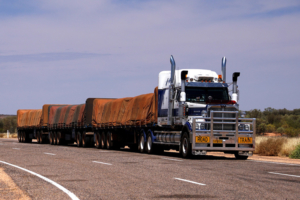Arizona has definitely gone global.
“We want to extend our hand so that Arizona is an inviting place for foreign direct investment and for companies that are looking to relocate,” says Arizona Gov. Doug Ducey.
But Arizona hasn’t always been as attractive to global companies.
“At one time, we had some issues in the West Valley where we were getting glossed over for economic development opportunities,” says Art Othon, chairman of Greater Maricopa Foreign Trade Zone. “We were on the short list to become a new site for target.com for its merchandising warehousing and internet distribution.”
Target chose another location and Othon says only one thing prevented the West Valley from landing that economic development prize.
“We did not get it because we did not have foreign trade zone status,” Othon recalls. “At that point, a couple economic developers said, ‘enough is enough.’”
Impact on West Valley
Since WESTMARC helped spearhead the organization and approval of Foreign Trade Zone (FTZ) No. 277 in 2010, the zone has become a catalyst for attracting new economic development and businesses to the West Valley and creating jobs. Since its inception, the Greater Maricopa FTZ (GMFTZ) has attracted an estimated $448 million of capital investment and created more than 1,400 West Valley jobs within WESTMARC’s cities. Based on an economic impact study completed by Elliott D. Pollack & Company in March, it is estimated that an additional 1,500 jobs will be added over the next six years as a direct result of FTZ No. 277. These figures are exclusive of the jobs that are created as a result of new construction, as well as the jobs that are created from the additional ripple effects throughout the economy.
“As the first site activated in Zone 277 in 2011, Sub-Zero experienced significant savings from the real and personal property tax reductions,” according to Ron Jones, plant manager for Sub-Zero, Inc. “Our facility has grown consistently in the past five years and reached capacity, which has led to a facility expansion scheduled for completion in October (of this year).”
By definition, an FTZ is a government-designated site where foreign and domestic materials remain in a kind of international commerce limbo. While the goods remain in the zone, the materials may be stored, manipulated, mixed with domestic and/or foreign materials, used in assembly or manufacturing processes, or exhibited for sale without triggering the payment of U.S. Customs and Border Protection (CBP) duties and excise taxes. Imports may flow directly into the zone and be held there indefinitely duty free. Duty is only assessed when those goods are shipped out of the zone and into the United States marketplace.
Catalyst for growth
FTZ designation is a powerful tool for economic developers as this federal program provides importers, third-party logistics providers, manufacturers and exporters with a number of cost-saving benefits, including reduced duties, consolidated weekly entries and local tax reclassification. Having this designation within a community provides a value-added benefit that can be utilized when competing against other locations for a corporate relocation, expansion or investment. This designation is given through the U.S. Department of Commerce and each of the approved sites are monitored by U.S. Customs & Border Protection.
“We are creating a cluster of advanced manufacturing and innovation that provides the foundation to drive sustainable growth in employment and productivity,” said Scott Whyte, Peoria’s economic development services director. “This FTZ designation fosters an environment that facilitates business attraction and expansion, as well as encourage international trade in the region.”
Othon says the GMFTZ features seven magnet sites and seven usage-driven sites. Four companies are active in operations — Sub-Zero, Cookson Company, Maxwell Technologies and Dick’s Sporting Goods — and three more companies are being activated this year.
While most FTZs are applied for by and approved for a single city, the GMFTZ is one of only a few in the United States that was supported by a consortium of cities for an entire region. And that move has paid off. Companies that have taken advantage of FTZ status include Sub-Zero, Dick’s Sporting Goods and Cookson in Goodyear; Maxwell Technologies in Peoria; and IRIS USA in Surprise.
“The FTZ was one of the benefits we saw when we were deciding where to move,” says Earl Wiggins, senior director of Maxwell Technologies. “I’ll be the first to admit that I dragged my feet because I didn’t understand the benefits.”
Benefits of FTZ
Those benefits are numerous:
• Big savings in processing fees. The 2000 Trade and Development Act contained a provision that provided for “weekly entry” procedures in all FTZs. Companies located outside FTZs pay a 0.3464 percent (value of merchandise) fee for every shipment processed by CBP. The minimum fee is $25, and maximum (which applies to any shipment valued at $140,000 or above) is $485, regardless of the amount of duty paid. Say a company located in an FTZ received 10 shipments, each with a value of only $150,000, every week. At $485 each, the processing fees outside the zone would be $4,850 weekly and $252,200 annually. Within the Zone, these same 10 receipts would be processed as a single shipment for a total fee of $485 per week, which translates into savings of $226,980 per year.
• Direct delivery is a CBP procedure only allowed in an FTZ. This benefit gives the users the ability to sign for CBP upon receipt of goods that normally have to go to another location for a signature before the goods can be delivered. Importers can cut out up to two days of inbound time on their receipt of goods.
• Specifically in Arizona — and within no other state — there is a tax benefit tied to the real estate and property taxes that all real property, machinery and equipment pays in Arizona. The FTZ re-classification under Arizona law allows for any property in a FTZ that is approved and activated to be re-classified down from 20 percent valuation to 5 percent valuation. Therefore, FTZ users, tenants, owners and operators receive a discount on their taxes of 75 percent annually.
• Eliminating duty drawback. Goods that are imported and stored in an FTZ may be re-exported without ever incurring duties. This eliminates the need to file for duty drawback refunds, a lengthy procedure that ties up funds.
“Having the GMFTZ definitely gives economic developers another tool to attract new businesses,” says Sintra Hoffman, president and CEO of WESTMARC, which provides marketing and administrative services to GMFTZ. “The GMFTZ also gives the West Valley an amazing opportunity for growth.”
What is a Foreign Trade Zone (FTZ)?
An FTZ is an area that, for U.S. Customs purposes, is considered to be international commerce. Any foreign or domestic material can be moved into an FTZ without being subject to U.S. Customs duties. An FTZ is operated as a public venture sponsored by a municipality or other authority.
Why do communities develop FTZs?
Local communities benefit from the increased economic development and business development/retention that result from the FTZ. Foreign Trade Zones provide an attractive business climate and encourage foreign or domestic companies to expand and retain operations in the U.S. that might otherwise be relocated overseas. The result is more jobs for the region.
Why do companies use FTZs?
Companies utilize Foreign Trade Zones in order to reduce operating costs associated with a U.S. location that can be avoided when operating from a foreign site. In Arizona, real and personal property taxes may be reduced by 72 percent. These benefits allow firms to be cost competitive at their U.S.=based operations.
What is Foreign Trade Zone No. 277?
On Dec. 22, 2010, the Foreign Trade Zones Board issued a Grant of Authority under Board Order No. 1733 to establish Foreign Trade Zone No. 277 to serve Western Maricopa County and designated Greater Maricopa Foreign Trade Zone (GMFTZ) as the grantee of the zone. Since that time, the zone has spurred investment in infrastructure, speculative industrial buildings and attracted more than 1,400 new jobs and $448 million in capital investment.




